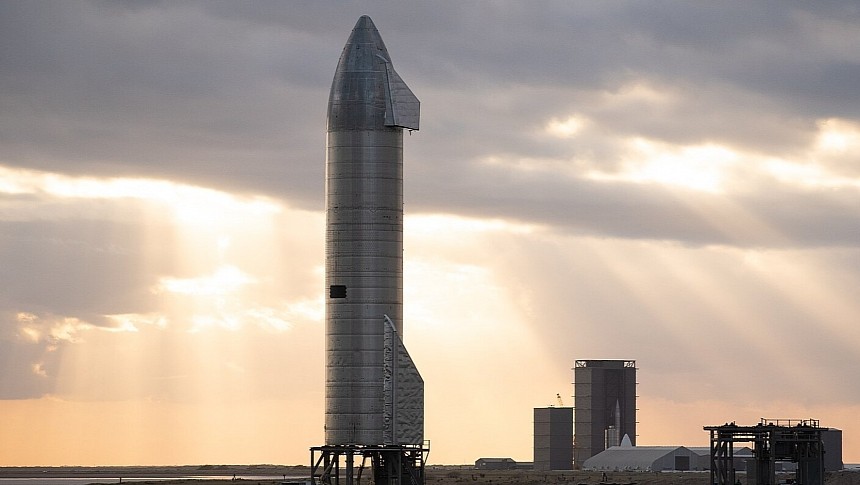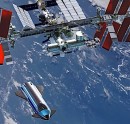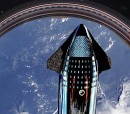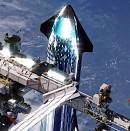The last time SpaceX's flagship vehicle, Starship, tried its hand at liftoff, the results brought a whole new meaning to blazing it on 4/20. The amount of FAA paperwork resulting from the whole debacle likely still keeps at least one employee there busy for months. But one can only assume that SpaceX is "built different" than other aerospace companies. Because less than one calendar year after the first un-crewed Starship made its best Soviet N1 impression, Starship may be ready to try again far sooner than you think. If unconfirmed reports are true, it might even be this month.
As per the latest report from the Starship section of SpaceX's web page, the second flight of Starship could take place as early as November 13th, should the appropriate federal regulators give the all-clear in time to make it happen. The FAA comprehensively grounded the Starship spacecraft after its firework-adjacent display its first time out on the trot, pending the completion of a comprehensive list of safety enhancements that the FAA requires to be met before they allow one more Starship flight test. Many of these requirements focus on contingency plans resulting from multi-engine failure, as took place during Starship's first test launch.
At least three of Starship's 33 first-stage Raptor liquid-fueled rocket engines failed before the spacecraft had even lifted off that fateful day. Several others failed mid-flight. All the while, a lack of applicable thrust vectoring prevented Starship's first stage from separating, prompting the order to self-destruct from mission control. With added upgrades like a newly-designed hot-stage separation system, which forces the two stages apart even while the first stage is still firing, and an electronically-operated thrust vectoring system that allows for a clean stage separation regardless of speed or altitude.
In an innovative attempt to keep Starship's exhaust gasses from consuming its launch pad on liftoff, a clever water-cooled steel flame director's been added to deflect as much thermal heat away from vital launchpad components, giving them a better chance of being re-used on subsequent Starship launches. Whether this plethora of safety and reliability-focused upgrades to the Starship platform will convince the FAA of its flightworthiness is still up in the air.
Knowing that NASA's Artemis III mission carrying humans to the lunar surface still plans to use Starship as the vital lunar descent vehicle in 2025, a great deal is riding on its next launch coming sooner rather than later. But SpaceX won't receive preferential treatment from the FAA by virtue of its larger-than-life leading man. Only once all the Ts are crossed and the Is dotted will the FAA even consider giving Starship the all-clear to launch. Whether such an even can happen less than two weeks from now remains to be seen.
At least three of Starship's 33 first-stage Raptor liquid-fueled rocket engines failed before the spacecraft had even lifted off that fateful day. Several others failed mid-flight. All the while, a lack of applicable thrust vectoring prevented Starship's first stage from separating, prompting the order to self-destruct from mission control. With added upgrades like a newly-designed hot-stage separation system, which forces the two stages apart even while the first stage is still firing, and an electronically-operated thrust vectoring system that allows for a clean stage separation regardless of speed or altitude.
In an innovative attempt to keep Starship's exhaust gasses from consuming its launch pad on liftoff, a clever water-cooled steel flame director's been added to deflect as much thermal heat away from vital launchpad components, giving them a better chance of being re-used on subsequent Starship launches. Whether this plethora of safety and reliability-focused upgrades to the Starship platform will convince the FAA of its flightworthiness is still up in the air.
Knowing that NASA's Artemis III mission carrying humans to the lunar surface still plans to use Starship as the vital lunar descent vehicle in 2025, a great deal is riding on its next launch coming sooner rather than later. But SpaceX won't receive preferential treatment from the FAA by virtue of its larger-than-life leading man. Only once all the Ts are crossed and the Is dotted will the FAA even consider giving Starship the all-clear to launch. Whether such an even can happen less than two weeks from now remains to be seen.



















